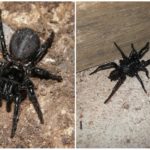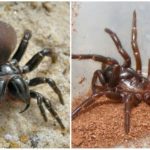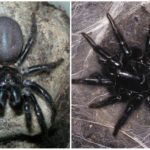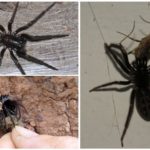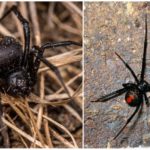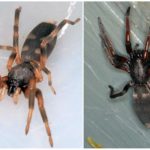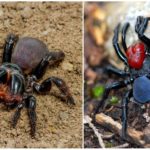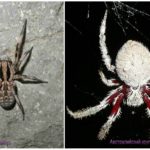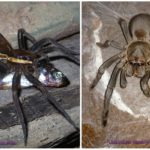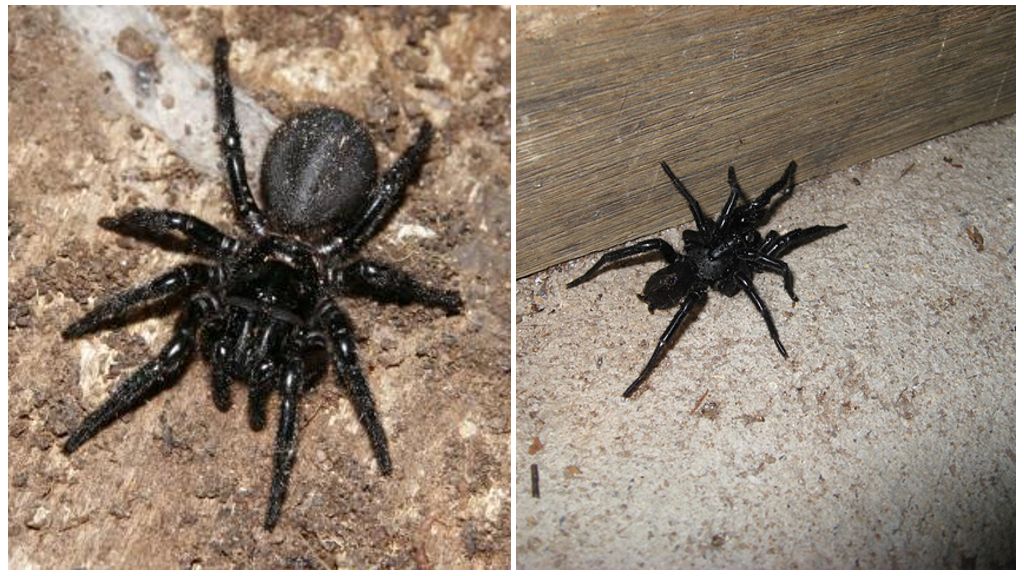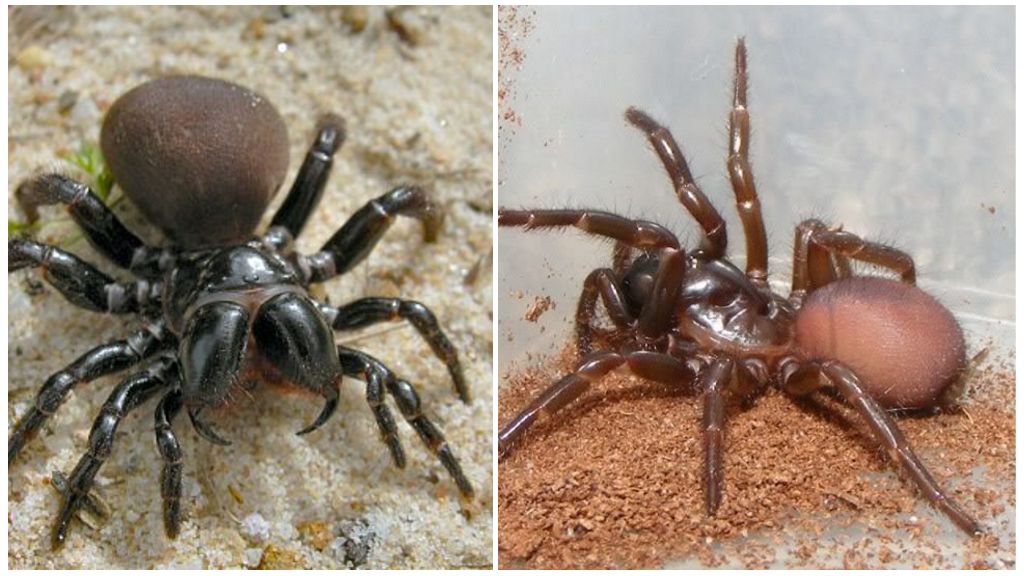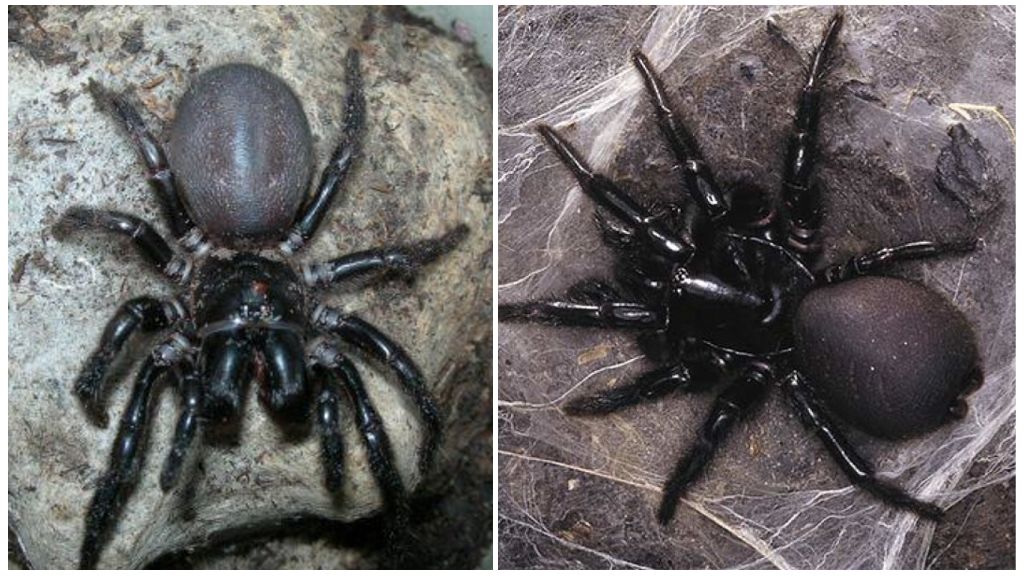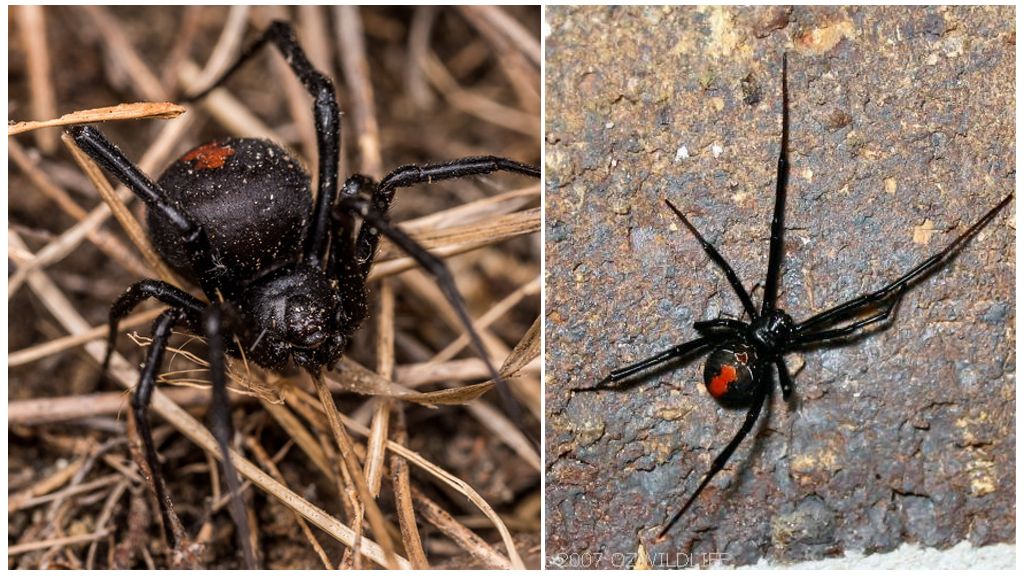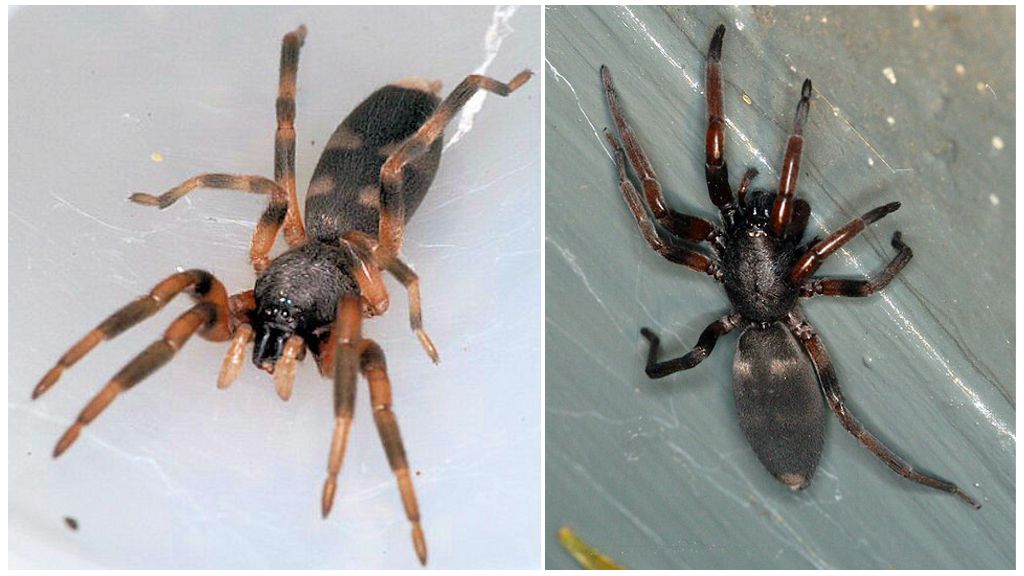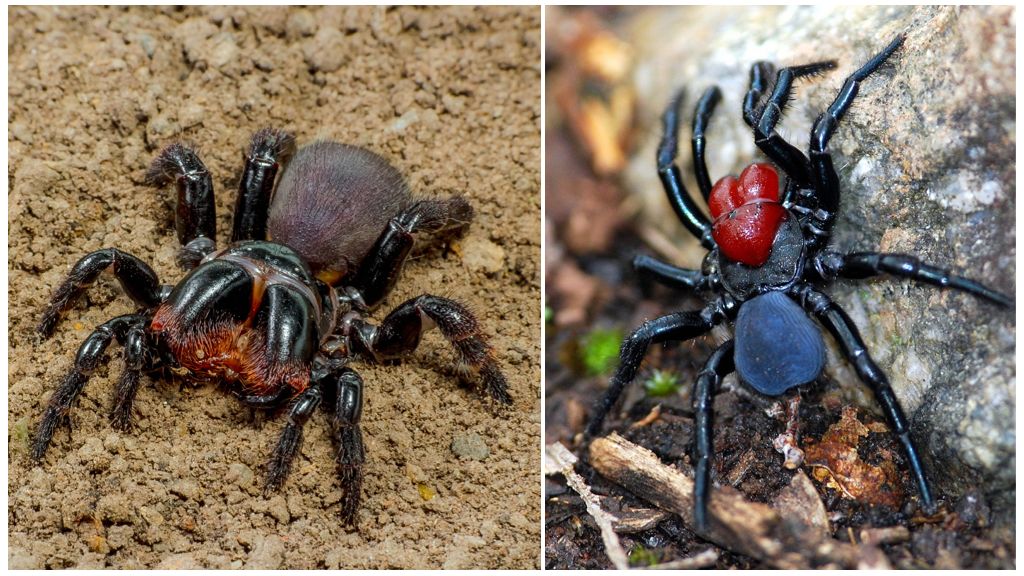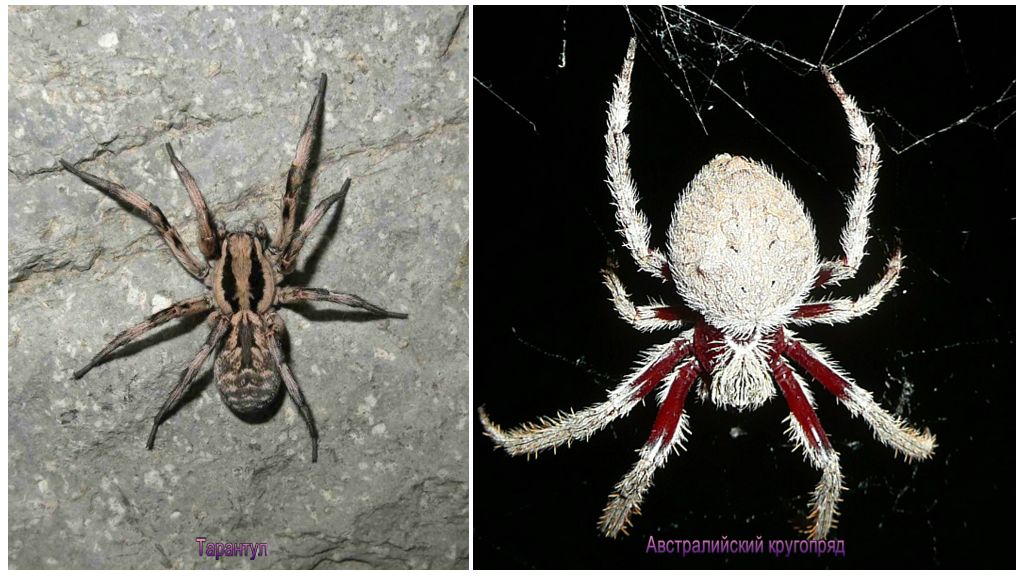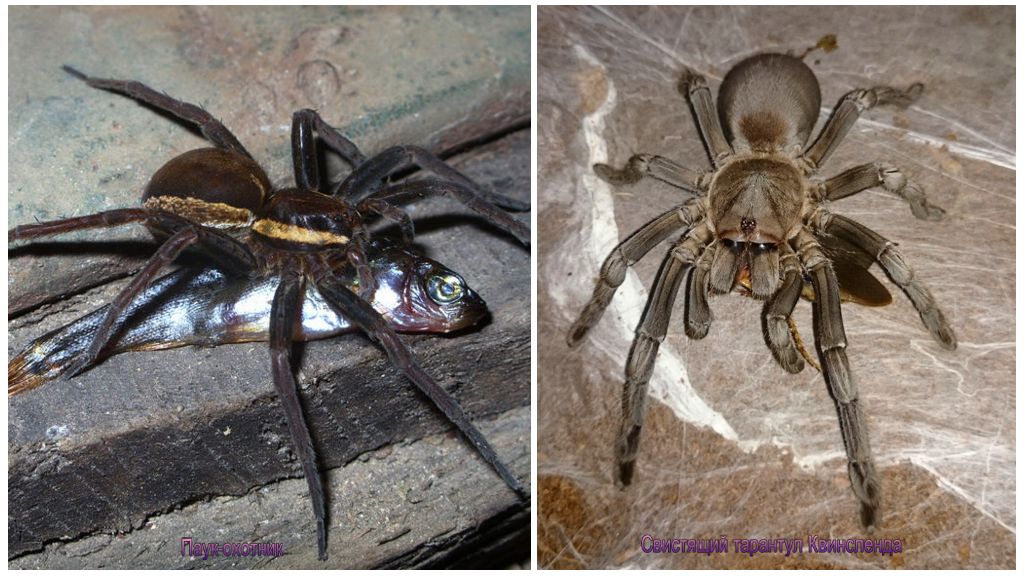Description and photos of Australian spiders
- Sydney leukopautin
- Northern tree funnel
- Small southern funnel
- Funnel spider
- Australian widow
- White tailed spider
- Mouse spider
- Spiders australia
- Spiders australia
On the continent, separated from other continents in the middle of the Cretaceous period, very peculiar flora and fauna were formed. Similar animals anywhere, except Australia, do not meet.Because of the isolation today, the continental fauna is characterized by increased poisonousness and aggressiveness. Even the seemingly innocuous black swans introduced to other continents began to destroy other waterfowl. Snakes and spiders in Australia are distinguished both by the strong effect of the poison and by its large single dose. There is an interesting version that they needed so much potent poison to hunt larger or more poison-resistant animals. This prey died out quite recently by evolutionary standards, and the increased toxicity of Australian spiders and snakes is archaism, which did not have time to disappear.
Dangerous spiders
Australia's most venomous spider belongs to the family Voronkov (Agelenidae). Representatives of this family in Australia, there are 36 species. But only 3 of them are considered spiders dangerous to humans:
- Sydney leukopautinous, it is Sydney funnel;
- northern tree funnel;
- small southern funnel.
On a note!
You need to focus on the Sydney leukoputin, because it has the strongest poison. The other two were previously considered very poisonous. New research has shownthat these two species of Australian spiders are not capable of causing great harm to humans. Their poison can be neutralized with serum used against Sydney funnel.
Sydney leukopautin (Atrax robustus)
The most poisonous and dangerous spider in Australia. Not only is his venom without the assistance provided on time capable of killing a man, this spider is also very aggressive. When attacking, he pierces the skin deeply and has to be torn off by hand from the wound. Australians are saved by the fact that the habitat of this monster is small: New South Wells.
The usual dimensions of this arthropod are 1–5 cm. A case of catching a spider of 7.5 cm in size was recorded. The body color may be black with a blue tint, just black or brown.
Prefers to settle in cool, wet places or in houses. Its prey is large insects and other spiders. For this atrax and need potent poison and powerful chelicera. The Sydney leukopautinous spider is capable of piercing the thumbnail of a toe with chelicera. The main activity of this spider comes at night.
Interesting!
The poison of atrax is dangerous for all primates, other mammals are not afraid of the bites of the Sydney leucite spider.
In Australia, atrax are caught every year, since spiders are needed to make whey from their venom. To obtain 1 dose of serum spider "milked" 70 times.
Northern tree funnel (Hadronyche formidabilis)
Even a photo with the name is unlikely to help in practice to distinguish the northern tree spider from atrax. These representatives of the funnel family have very similar parameters:
- body length 5 cm;
- color dark brown or black;
- similar range.
Northern arboreal is common in Australia more widely than the Sydney leukopautin and also occurs in South New Wells.
The male of the northern woody form of the body almost copies the female atrax. The female looks more massive.
Dwells northern woody in hollows, cracked trunks, rotting wood, in epiphytic plants. Area of distribution: eastern Australia. It settles in trees up to a height of 30 m.
On a note!
Spider is active at night. Its prey is wood pests. Poison - the strongest among all members of the family. In half of the cases when the spider bites recorded severe intoxication of the body. As an antidote, serum against the venom of Sydney leukoputin is used.
Small southern funnel (Hadronyche cerberea)
Even the description of the arthropod sounds gloomy.This is a completely black spider with powerful chelicerae. The head is bright, matte abdomen. Sometimes the color of the abdomen can vary from light brown to dark brown.
The southern funnel spider is found in the dry terrain of Eastern Australia: from the Hunter River to the south of New South Wells. Prefers to settle in the trees. In areas where the ranges of the southern funnel and atrax intersect, can coexist together in the same hole.
¾ All bites of the southern funnel spider lead to severe intoxication. The first signs of poisoning appear after 15-20 minutes. As an antidote, serum is used against atrax bites.
Australian Widow (Latrodectus hasselti)
The second most venomous red-backed spider is more known as the atrax, as the Australian black widow. The red spider really belongs to the genus of black widows. The difference between the red-spine and the American spider is that the Australian relative has a longitudinal red stripe in the middle of the abdomen. Because of this band, it can be confused with Paykull steatod. But just look at the pictures to understand the difference.
A characteristic feature of the red-spinal spider is the presence of an hourglass-shaped spot on the lower side of the abdomen. The American black widow has the same stain.
Redspine is smaller than “American”: the body size of the female is 1 cm. But poisonousness is in second place both in the class of black widows and in the company of Australian spiders. Meeting a spider in the house is a common thing in Australia. Because of this, more people suffer from the bites of the Australian widow than from atraxes. Serum from the venom of red spikes exists, but it does not relieve pain after a bite.
The habitat of this species is the whole of Australia, since the Australian widow belongs to the “flying spiders”. This is a way of settling young spiders on cobwebs with the help of the wind.
Interesting!
There are no less species of such “flying spiders” in Australia than on other continents.
Whitetail
They belong to the genus Lampona, in which 2 species are distinguished: Lampona murina and Lampona cylindrata. These arthropods are very similar in appearance, the second species is somewhat larger: 1.8 cm body length and 2.8 cm paw span. Other differences can be observed only under a microscope.
The ranges of species are different, but with the addition of territories it turns out that white-tailed spiders are spread throughout Australia. Habitat:
- forest floor;
- gardens;
- human dwellings;
- shelter under the bark and rocks.
In houses, they often get into clothes, shoes or towels.
Networks do not build. These are hunter spiders. The main activity of white-tailed falls at night. Their prey are large insects and other spiders.
On a note!
A bite of lampona causes itching and burning. Sometimes there are necrotic foci. But studies have shown that the cause is not poison, but concomitant infection of the wound with pathogenic bacteria.
Mouse
The Actinopodidae family has 10 species in Australia. The name "mouse" is wrong, and these spiders do not dig holes. They hunt insects, bandicoots, scorpions and centipedes.
The body size of mouse spiders is 1-3 cm. Sexual dimorphism is manifested in body coloring: females of all species are black, and males can be brightly colored. The color of the males for each species is different.
A person is bitten rarely and usually without consequences. Of the 40 cases of registered bites, only 1 led to serious consequences.
Tarantulas
In Australia, representatives of the genus Lycosa, there are 29 species. Each species is limited by its relatively small range, but together they completely occupy the territory of the mainland.
Appearance and lifestyle are similar to Eurasian and American wolf spiders. The toxicity of tarantulas of the likos family in Australia is also at the level of their fellows from other continents.
Australian Orchard (Eriophora transmarina)
Replaces the usual krostovik in Australia. The Australian garden spider is indistinguishable from the cross in size and body shape, but there is no characteristic cross on the upper side of the abdomen.
Dwells in gardens, forests, parks. Like the cross, weaving a circular network. But he is particularly active at night, as the sun dries his body.
The Australian orb-weaver is more poisonous than the frog. Its poison can cause redness of the bite site, slight pain, and sometimes swelling. All consequences pass in 0.5-4 hours.
Interesting!
The Australian garden orb is also a “flying spider”.
Terrible in appearance
With all the aspirations of the Australian fauna, if you do not eat a person, then at least nibble, there are also quite harmless animals. These are found even among arthropods. Not all huge spiders in Australia are poisonous.
Hunter spider
The bite of this arthropod is not dangerous to humans, although it can cause consequences of varying degrees of severity. The level of exposure to the hunter's poison depends on the susceptibility of the victim.Or a torturer, since a hunter bites a human rarely and very reluctantly. It is necessary to provoke a bite for a long time.
Interesting!
The hunter does not weave nets, catching prey on long legs. The span of the paws of this spider is up to 19 cm. The speed of movement of the arthropod is 1 m / sec. The hunter's lifestyle is nocturnal.
Because of the love of cars, the hunter’s “conscience” may have more deaths than the Sydney leucoweb. The hunter likes to climb into the cars under the control panels or on the sun visors. Not every driver will cope with control if a hunter jumps on his knees while driving.
Queensland whistling tarantula (Selenocosmia crassipes)
In the Russian-speaking space, such spiders are commonly called tarantulas. In the English tradition, they are tarantulas. This species is also called the eastern tarantula.
It can be put apart, since with huge sizes (paw span 22 cm), it has a relatively strong poison. A bite of an eastern tarantula can lead to a six-hour vomit. But the death is not caused by a tarantula bite. He does not need a strong poison, because he does not feed on birds. Its prey is invertebrates and small lizards.
The maximum length of the body of a whistling tarantula is 9 cm. The tarantula has a massive body and chelicerae, growing to 1 cm in length. Feet thick. Front thicker than the rear. The color of the body covering the bristles is dark brown. Lives eastern tarantula in Queensland.
The lifespan of females is 30 years, males up to 8 years. This circumstance makes them desirable "pets" in arachnophils. As a result of the fact that whistling tarantulas are removed from the natural environment, the species is on the verge of extinction.

